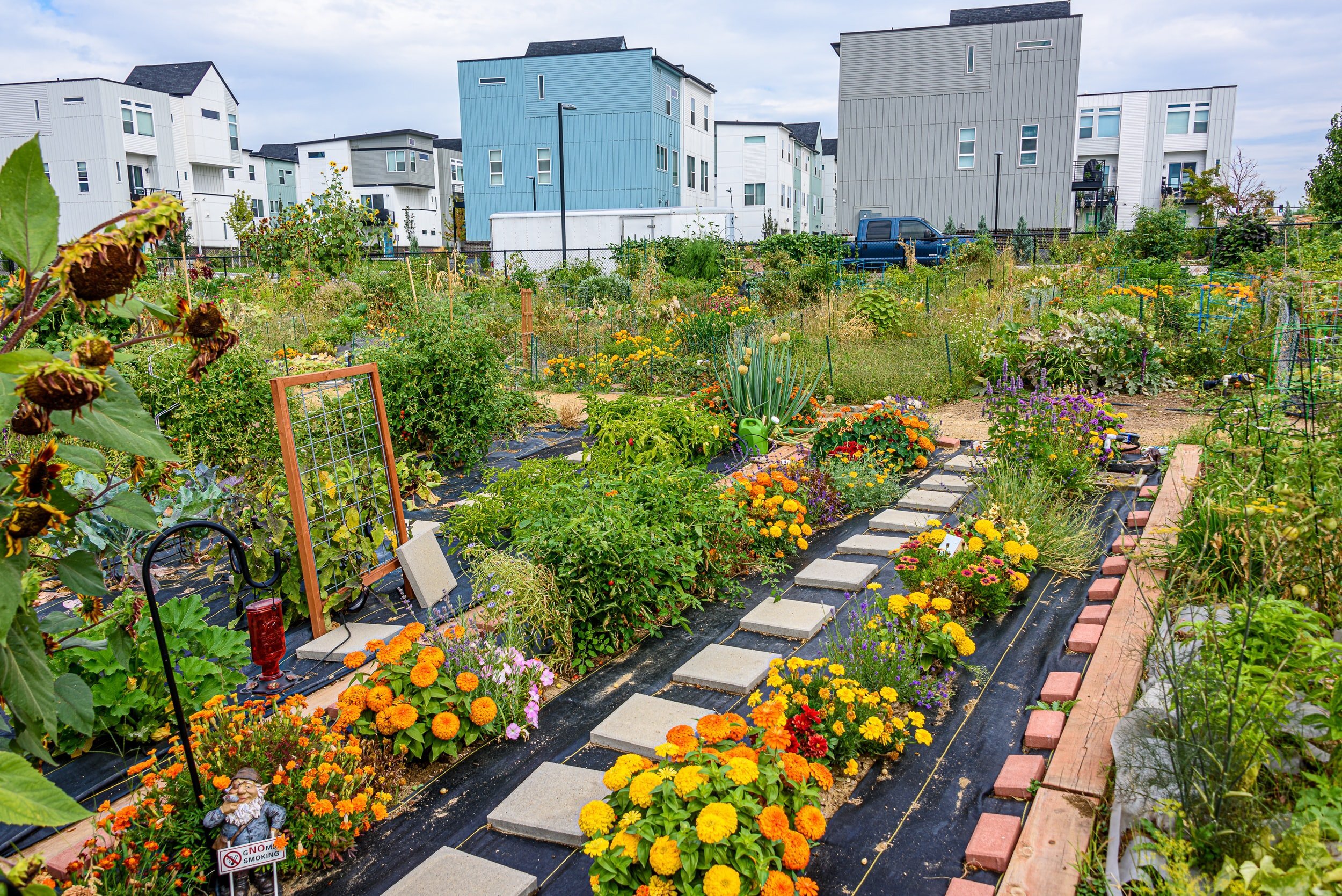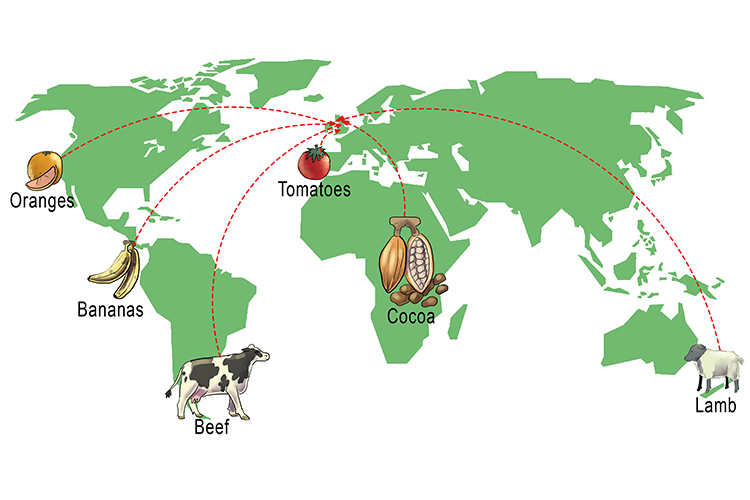Urban farming has emerged as an innovative solution to many environmental challenges facing cities today.
From reducing food miles to improving air quality, the benefits of urban agriculture are far-reaching.
How Does Urban Farming Help the Environment?

Urban farming helps the environment in several key ways.
It reduces food miles and related greenhouse gas emissions by growing food locally.
Urban farms also support biodiversity by creating green spaces and habitats.
Additionally, practices like composting recycle organic waste.
Urban agriculture can lower heat island effects through green roofs and vertical gardening too.
Key Points
- Reduces food miles and greenhouse gas emissions
- Supports urban biodiversity through green spaces
- Recycles organic waste into compost
Our Opinion
Urban farming is a promising sustainability solution for cities.
By producing fresh food locally, urban agriculture reduces fossil fuel use and pollution from long-distance food transport.
We believe urban farms are an effective way to improve access to healthy, locally-grown produce as well.
Overall, urban farming delivers environmental, social, and economic benefits for cities.
Urban Farming Reduces Food Miles

One of the most direct environmental benefits of urban farming is the reduction in food miles. Food miles refer to the distance food travels from where it is grown to where it is ultimately consumed. For produce and other perishable foods, this often means extensive transportation via trucks, ships, and planes. All this transportation burns fossil fuels and contributes to climate change through greenhouse gas emissions.
With urban farms integrated right into cities and communities, the food miles are dramatically shortened. Greens grown on an apartment building rooftop may travel just a few floors down to be eaten. Fruits and vegetables from a community garden plot potentially move just blocks before being consumed. This localized production cuts down on transportation needs and their associated emissions and pollution.
Urban farms also conserve energy through reduced processing, packaging, and refrigeration which are required for longer-distance transport. Food from urban farms reaches consumers faster, preserving freshness and nutrition. So urban agriculture helps shrink food miles, minimizing environmental impacts across the food system.
Urban Farming Conserves Water

In addition to reducing food miles, urban agriculture helps conserve water in a variety of ways. First, urban farms typically utilize smart irrigation techniques such as drip irrigation, moisture sensors, and rainwater harvesting. These methods deliver water right to the plant roots, minimizing waste. Row crops and fruit trees grown vertically at urban farms also lose less water to evaporation.
Urban agriculture also cuts back on water used for food processing and transportation. Localized production eliminates water-intensive steps like canning, freezing, and long-distance shipping. And food from urban farms stays fresher, resulting in less spoilage and waste. Composting food scraps on-site further conserves water by closing the loop locally.
Finally, green spaces in cities help capture stormwater runoff and allow it to infiltrate the soil. Urban farms put this retained water to productive use when growing food. Through precision irrigation, on-site reuse, and stormwater infiltration, urban agriculture makes cities more water-wise.
Urban Farming Increases Biodiversity

Urban farms boost biodiversity in cities by providing habitat for various plants, insects, birds, and other wildlife. While concrete jungles are ecological deserts, farms interspersed throughout urban areas create green corridors where nature can thrive. From pollinator gardens to vertical growing walls, urban agriculture incorporates many elements that attract diverse flora and fauna.
The variety of crops grown on urban farms also promotes genetic diversity. Instead of monocultures of commodity crops like canola, small-scale urban farms offer niche and heirloom varieties. This crop diversity strengthens the resilience of our food system against pests, diseases, and climate change impacts.
In addition, composting and sustainable soil management practices on urban farms encourage microbial biodiversity in the soil. Healthy soils with a diversity of microorganisms are more productive and help sequester carbon. By regenerating urban soils, farms act as biodiversity havens from the ground up.
With their mosaic of gardens, orchards, and small fields, urban farms provide vital habitat and genetic diversity. They enable cities to support a wide variety of species and create ecologically rich environments.
Urban Farming Reduces Pollution
Urban agriculture can help mitigate various forms of pollution in cities. By covering bare ground and contaminated soils with vegetation, urban farms prevent soil erosion and degradation. The plant roots stabilize the soil, while the canopy protects against wind erosion.
Urban farms also filter stormwater runoff, reducing the amount of pollutants entering waterways. The plants and soils act as a natural filtration system to capture contaminants. Some urban farms even reuse stormwater for irrigation, turning an urban pollution problem into a resource.
In addition, green spaces in cities absorb air pollution like particulate matter and carbon dioxide. The vegetation improves air quality by acting as a sink for these pollutants. Urban farms can also help reduce noise pollution by absorbing and blocking sound.
Furthermore, producing food locally cuts down on pollution from transporting food long distances. Reduced food miles lower greenhouse gas emissions from transport. Growing food in cities also reduces packaging needs and food waste in the supply chain.
By integrating agriculture into the urban landscape, cities can harness natural processes to filter water, sequester carbon, and purify air. Urban farms turn empty lots into pollution buffers with the added benefit of growing food.
Urban Farming Mitigates Climate Change
Urban agriculture can play a role in climate change mitigation. By converting unused spaces into green infrastructure, urban farms increase carbon sequestration and storage. Plants absorb carbon dioxide from the atmosphere through photosynthesis and incorporate the carbon into their biomass.
Green roofs and vertical gardens also provide insulation, reducing building energy use for heating and cooling. This further decreases fossil fuel consumption and greenhouse gas emissions associated with electricity generation.
Additionally, producing food locally reduces emissions from long-distance transport of produce. Food travels an average of 1,500 miles to reach most cities. Local urban farms eliminate these food miles, lowering carbon footprints.
Urban agriculture increases climate resilience as well. Green spaces help regulate temperatures and provide cooling during heat waves. By incorporating stormwater capture and reuse, urban farms increase water retention and reduce flood risk. And localized food production improves food security if supply chains are disrupted by extreme weather.
With thoughtful integration into city landscapes, urban agriculture can mitigate greenhouse gas emissions, increase carbon storage, reduce energy use, and strengthen climate adaptation.
FAQ
How Does Urban Farming Make a City More Sustainable?
Urban farming increases sustainability by allowing cities to produce food locally, reducing the need for transportation from rural farms. It also recycles organic waste into compost to grow food.
How Would Urban Farming Help Fight Climate Change?
Urban farming helps fight climate change by reducing food miles, and cutting down on transportation emissions. Local food production also sequesters carbon in soils. Green roofs and vertical gardens lower urban heat island effects.
Can Urban Farming Solve World Hunger?
While urban farming alone cannot completely solve world hunger, it can improve food security in cities and provide fresh produce to underserved areas. It supplements rural agriculture to boost overall food production.
How Does Urban Agriculture Impact the Environment and the Food Supply?
Urban agriculture benefits the environment through efficient resource use, greenhouse gas reduction, and increased biodiversity. It also increases local fresh food access, creates jobs, and reconnects people with food production.
Conclusion
Urban farming provides many environmental benefits for cities. By producing food locally, urban farms reduce fossil fuel use and greenhouse gas emissions from long-distance food transport. Urban agriculture also supports biodiversity and natural habitats in cities. Local food production improves community access to nutritious, fresh produce as well. Overall, urban farming helps create more sustainable and resilient city food systems.
